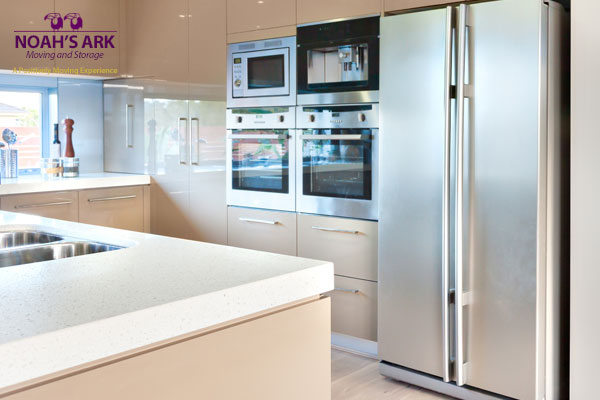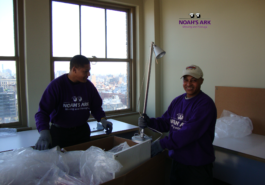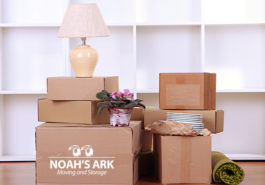 A Positively Moving Experience
A Positively Moving Experience

Moving Large Appliances

When you’re getting ready for a residential move, it’s likely that packing your small items like clothes and books will be much easier than packing large appliances like refrigerators. Here’s a guide from the expert team here at Noah’s Ark Moving & Storage on how to move large appliances.
Disconnect Appliances Before the Moving Company Arrives
The majority of moving companies won’t touch hard wired appliances or appliances connected to gas like stoves or driers. Make sure all of your appliances are safely disconnected before moving day – consider hiring electrical professionals to verify this. Remove all loose components from the inside of appliances before moving day as well.
Defrost Refrigerators
Make sure to unplug your refrigerator at least 24 hours before your moving day, giving your fridge time to adjust, and preventing the occurrence of leaks on moving day. This is especially important with freezers. Make sure the water line from fridges and freezers is totally disconnected and drained. Then, dry all the shelves to prevent mold and mildew, and make sure to also dry the drip tray often positioned in the bottom of the fridge.
Washers and Dryers
Make sure to find all the parts of your washers and dryers you were given when you purchased it in order to secure the drums. If you don’t have these components, contact the manufacturer for a replacement kit.
Stoves
Make sure to clean the inside and outside of your stove, and remove or secure all interior racks. Make sure to turn off your gas before disconnecting any gas stove. If you’re not sure what to do, call your gas company for help. Just make sure to check your power supply at your new location before connecting the stove to make sure you have met all necessary electrical requirements.
Cord Packing
Make sure to plug all appliance plugs into the back of each unit with packing tape, and don’t allow any plugs to hang or dangle loosely, which can cause damage to appliances if they are accidentally ripped, or potentially trip people. Just make sure to secure all doors, knobs, cords, or extra parts with packing tape.
Empty Gas Tanks in Outdoor Appliances
Make sure to drain all gas tanks for outdoor appliances like snow blowers, motorcycles, scooters, and lawnmowers. It’s dangerous for there to be volatile and flammable gas present with your belongings during the move, so make sure not to overlook this critical step.










